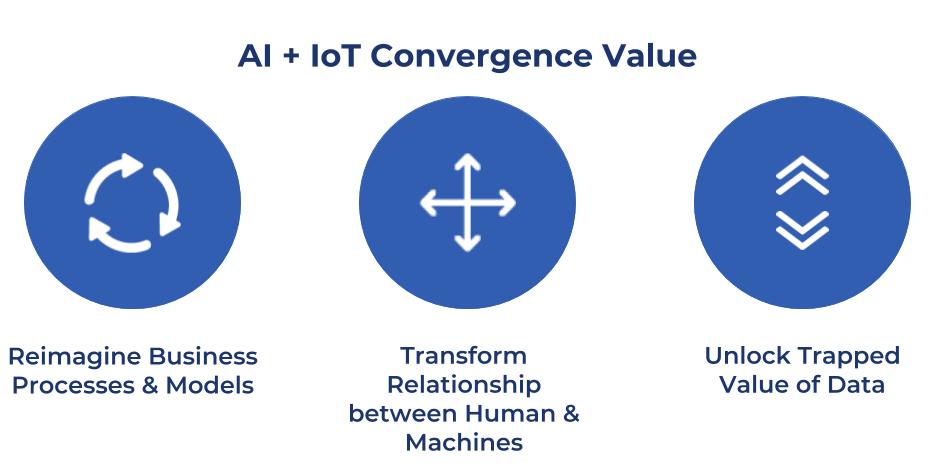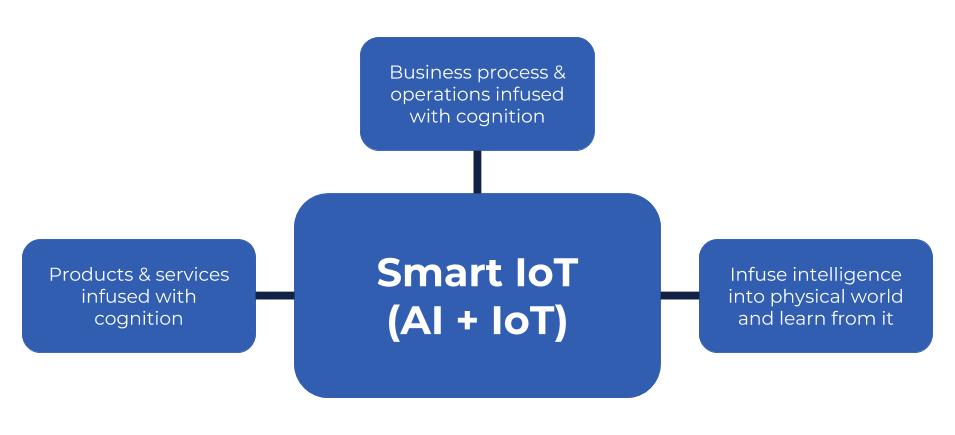"Internet of Things" is the latest buzzword in the technical domain. It is the current hot topic of conversation both in place of work and outside of it. But how IoT is helping in solving real-world problems? What is the advantage of linking so many devices over the network? The answer lies in the raw data The core of the Internet of Things is collecting data and tapping and analyzing that data to enable connected devices or people to make smart decisions. Without making sense of data and leveraging it to get a smart decision, getting such a large amount of data from associated entities do not make any sense. But how IoT systems can make intelligent choices? That’s where AI and machine learning come to the rescue of the Internet of Things.
Machine learning is a branch of computer science which detects and infers patterns from the past data to make valuable predictions about the future. AI is the sub-branch of machine learning which equips a machine to mimic a human brain and can make decisions based on its past experiences as well as respond to action in real time. Moreover, AI trains a machine to understand and adapt itself according to the environment that it is surrounded by so that it can make sound choices in real time scenarios.
Consequently, we can see that there is a clear overlapping between the Internet of Things and AI. IoT is about connecting devices and making use of the raw data produced by those devices. Whereas, AI trains machines to yield smart decisions by simulating intelligent behavior in them. IoT produces a vast amount of data and AI is necessary to make any sense of this raw data. Data is of no use if we cannot deduce any sort of action from it. However, when augmented with creativity and intelligence it can create wonders. We can name the blend of IoT and AI as “connected intelligence”.
Another importance of applying ML to IoT data is that ML-based systems improve themselves automatically over time. With more data generated by IoT, intelligent systems yield more rational and accurate forecasts. In this way, organizations can receive the most balanced decision without actually “thinking.”

Examples of AI in IoT
Let’s explore the current applications of AI in IoT systems and how companies are optimizing the wonders of AI for the betterment of their IoT systems.
Cost Savings in Industrial Applications (IIoT)
The extensive use of IoT systems with industrial equipment provides an excess amount of data. By applying AI and machine learning algorithms to the generated data, organizations identify potential issues and their root cause in order to solve them in advance... Companies can now foresee when a machine needs maintenance and it helps them to save tons of money.
Shaping Human Experience
Humans are already experiencing applications of machine learning in their daily lives. From Amazon and Facebook to IMDB and Netflix, all of these companies are using machine learning algorithms to give us a better user experience by learning our preferences. Combining IoT with machine learning can be exceptionally valuable in enhancing user experience. Nest Thermostat is a great example of ML in IoT. It learns about your preferences of hot and cold temperature with ML algorithm and makes sure to adjust the temperature according to your liking when you wake up or when you reach home.
AI and IoT in Health Sector
Medical device sensors, hospital medical management systems, fitness trackers have been collecting bundles of data from a long time. AI and IoT are already working side by side through the interoperability and data interchange between all healthcare facility centers, allowing facility workers to have a clear view of real-time events on a facility center so that they can act upon it in a timely fashion. In addition to this, the convergence of IoT and AI is being used to improve the workflow of clinics and for their maintenance backlog so that the staff can concentrate more on patients and less on technicalities.
Checkout this infographic which highlights the Top AI Projects in the Blockchain Space
The Potential Use Cases Where Combination of AI & IoT can be Applied
Smart cities and smart homes are probably the hottest ideas on board which can only be made possible when AI and IoT work hand in hand. IoT is still applied to connect various home devices but blending AI with it will give rise to more automation. Such intelligent devices will learn from our preferences and will create a more pleasant and automatic user experience. An ideal Smart Home is a multi-layer system which should not need any management from humans and should make intelligent decisions based on past behaviors of humans.
In addition to this, a reliable, safe and intelligent driverless transportation is another concept which can be achieved with IoT and AI.

AI and IoT: The Future
The true potential of the Internet of Things will be enhanced at an accelerated rate when it is combined with AI and ML. Machine learning algorithms are now assimilated in almost all industrial IoT platforms, such as Microsoft Azure IoT, IBM Watson IoT, [Amazon AWS IoT](Amazon AWS IoT), etc. It may soon become difficult to find an IoT operation that does not integrate AI at some point. According to International Data Corp, by the end of 2019, AI will be incorporated in “all effective” IoT systems and without AI, data gathered from connected devices will have little or no value. Sooner than later we will see the existing advances turning even more into reality through automated healthcare systems, transportation, smart cities, and many more. We just need technologies to talk to each other and let ourselves be dazzled by what they can create.


